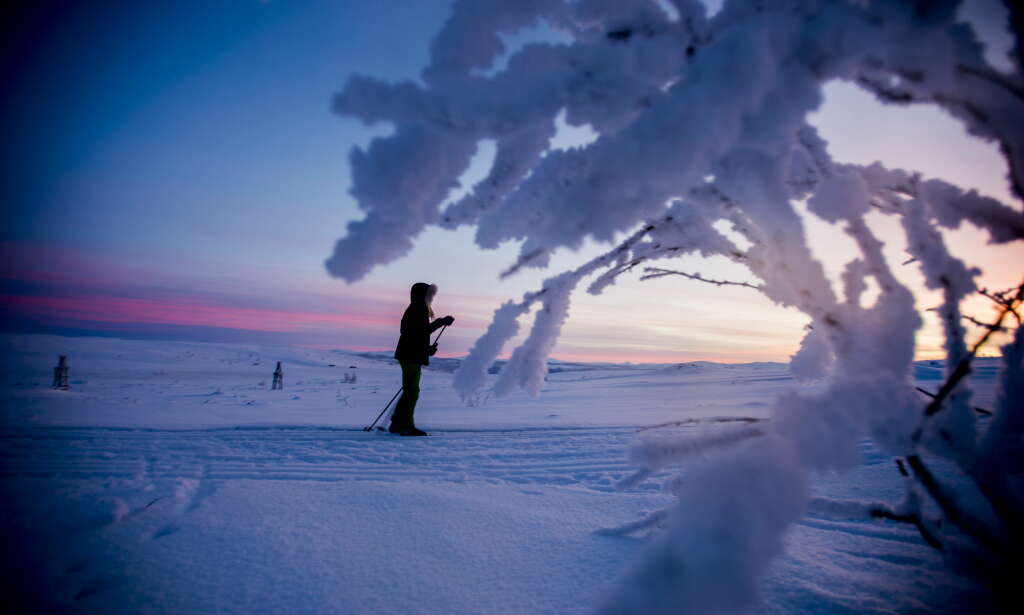(Dagbladet): on Tuesday morning experienced Svalbard something so rare as to be Norway’s warmest place, reports the Norwegian Meteorological institute.
Very mildest were the on stations are established the svea mine and the Island, where it was measured is 4.1 degrees at 7. Svalbard Airport had 3,8 ° c, while it was 4 degrees on the Pyramid measuring point, shows a from meteorologists.
Temperaturrekorden in Longyearbyen in February is on 7 plussgrader from 2012, and it is not impossible that it’ll turn later this week.
 UPSET: Director Jan-Gunnar Winther at the Norwegian polar institute believes the consequences of the high winter temperatures of recent years is that the glaciers are melting, that the life of animals that live in and off the ice is in a worse situation than before. Photo: Tore Meek / NTB scanpix Show more
UPSET: Director Jan-Gunnar Winther at the Norwegian polar institute believes the consequences of the high winter temperatures of recent years is that the glaciers are melting, that the life of animals that live in and off the ice is in a worse situation than before. Photo: Tore Meek / NTB scanpix Show more
- This, we’re going to see more of the
Jan-Gunnar Winther, director of Norwegian polar institute, says it is highly likely that this is a development we will see more of in the future. But he is surprised at how quickly and how powerful the temperature increase is.
- Several winters has the temperature has been between 5 and 10 degrees above normal on Svalbard. Today, it is as much as twenty degrees above normal. There are no places on the globe that the temperature increase is as evident as in the Arctic, ” says Winther.
He emphasizes that today’s high temperature in the archipelago is a weather phenomenon, but that we probably will see more of this in the future.
- the Sum of weather over time is climate, and one can hardly mention what we see on Svalbard as a new climate “tipping point”. Globally, we are talking about a togradersmål. Svalbard has the temperature risen by much more, ” says Winther.
-Special situation
the Reason for the high winter temperatures are among other things, that the ice, which previously surrounded Svalbard during the winter, is now gone. Without the sea ice, which acted as a kind of lid, it prevents the no longer the seawater from releasing heat to the atmosphere, which in turn leads to higher temperature.
 MAJOR CHANGES AT ONCE: It is highly likely that the highest temperatures is a development we will see more of in the future. But he is surprised at how quickly and how powerful the temperature increase is. Photo: Linda Næsfeldt / Dagbladet Show more
MAJOR CHANGES AT ONCE: It is highly likely that the highest temperatures is a development we will see more of in the future. But he is surprised at how quickly and how powerful the temperature increase is. Photo: Linda Næsfeldt / Dagbladet Show more
the Consequences of the high winter temperatures of recent years is that the glaciers are melting, that the life of animals that live in and off the ice is in a worse situation than before. We also see that species such as cod, capelin, haddock, birds and polar bears move northwards when the climate changes.
There is also a special situation for those who are resident on Svalbard. The last few years there has been a lot of rainfall, and less permafrost in the ground has led to the unusually severe erosion and several ras. The future becomes a challenge with infrastructure, and one must, among other things pæle the houses further down in the ground in order that they may stand the more secure.
In October were roads in the middle of Town is closed due to landslide, and later in autumn large parts of the population in the city evacuated from their home due to imminent risk of avalanche. In addition, a more humid each passing day because the building is unstable, and both the roads, water, sewage, telecommunications and power run the risk of unexpected fractures.
Mild also the rest of the week
While it was 4.1 degrees on Svalbard is in the morning, was the warmest place in Mainland-Norway, the Ona lighthouse in the county of Møre and Romsdal by 2.8 degrees.
Also on Monday, there were mild temperatures in Svalbard. The reason that it is cold in the south and hot in the north is the combination of a massive high pressure from Russia, which sends some powerful icy wind from the east into the mountains, and a larger low-pressure system to the south of the Island that pumps mild long north Norwegian sea and the Barents sea.
2016 was a record year for Svalbard with regards to both mild temperatures and nedbørmengde.

No comments:
Post a Comment